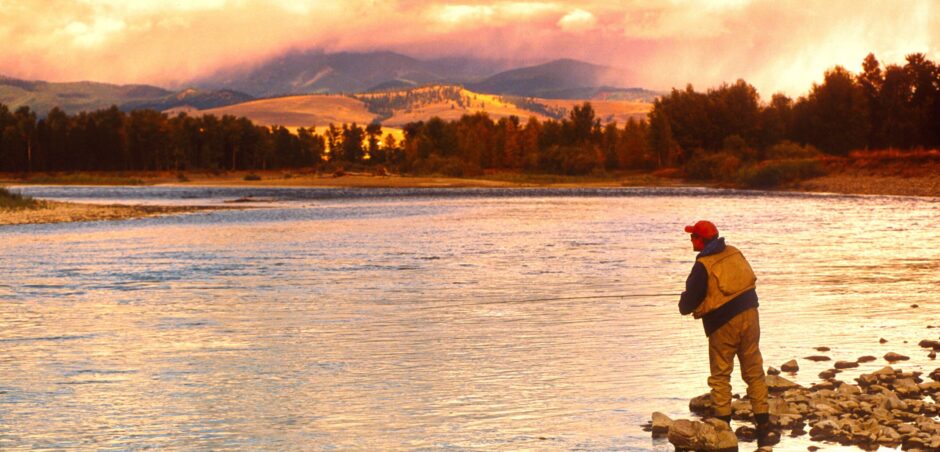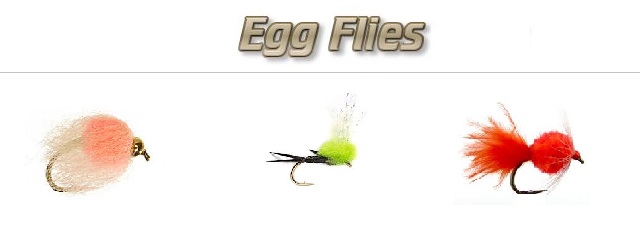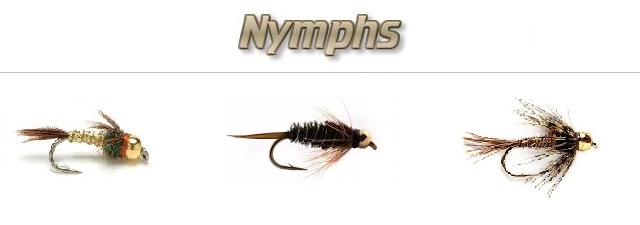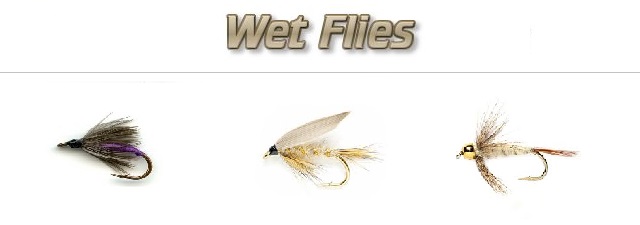There are 5 main categories that pretty much classify all types of flies that you will see on the market.
Any fly that floats is technically a dry fly. A dry fly is meant to imitate various aquatic insects in their adult stage. Using a dry fly can help you read the surface currents because you should be able to see your fly moving along the surface. Dry flies imitate various aquatic insects in their adult stage. Dry flies may imitate mayflies, caddisflies, and midges.
Fish eggs from spawning fish make up a substantial percentage of a salmon or trout’s diet once they enter the rivers and streams to spawn. Egg flies are made to imitate an egg and they can be very effective in the rivers and streams for spawning salmon and trout. Some egg flies do a great job of imitating an egg, while others combine an egg with a popular fly pattern. Both types of egg flies will work well.
Nymphs are aquatic insects that are still in their underwater stage, not having reached their adult, or flying stage of life yet. For those of you that are familiar with dry flies, a nymph is just a younger version of those same kinds of flies. The younger version stays under water while they are developing. Nymphs are smaller and incomplete in their development.
Streamers are usually tied on long-shanked hooks. Some of the most popular streamers are made to imitate baitfish such as small minnows. There are other types of streamers that are very colorful and they are seen as colorful attractors that may suggest that something is either alive, edible or a threat. Streamers are typically heavier and bigger in size than nymphs. Streamers can catch a variety of different fish such as bass, crappie, salmon, trout, redfish, sea trout, tarpon and many others.
Wet flies may be similar in appearance to standard Dry Flies, but the hackle will usually be softer, and the wing slanted back. They simulate drowned insects or emergers.
Popular Types of Flies That Anglers Buy
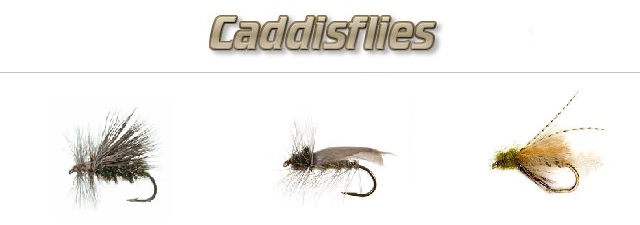
Caddisflies, also known as sedges, will go through egg, larva, pupa and adult stages. The eggs sink to the bottom, hatch into larva, and the young larva then form their cocoon-like casings. The larva grows within its casing and 3 weeks prior to its emergence, the larva seals the entrance to the casing and pupates within. Once developed, the pupa breaks the seal, crawls out, swims to the surface and hatches into an adult.

The egg sucking leech is a very popular fly for fishing the rivers for a variety of salmon and steelhead. Other trout will hit these flies too, so you can use them for a variety of fish, however, most anglers tie these on for salmon and steelhead.
Visit our Egg Sucking Leech Section
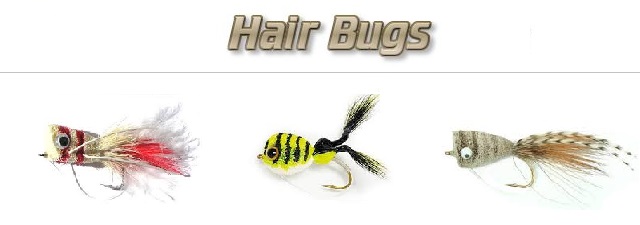
Hair bugs are similar to poppers. They are large, noisy and are usually dressed with rubber or hair legs. Hair bugs are typically made by spinning hollow antelope, caribou, deer or elk hair to a hook. They are porous so they don’t float indefinitely the way that poppers do, but they are softer, which makes them rejected less quickly once they are grabbed by a fish. Hair bugs will not hold up as well as poppers, so most anglers stay away from northern pike, muskie and most saltwater fish. Hair bugs are very popular for big trout, bass and panfish.
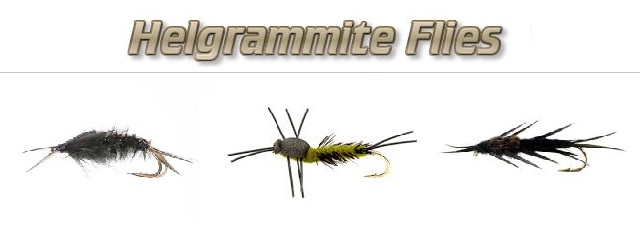
Hellgrammite flies are very popular among smallmouth bass and trout anglers. Drifting hellgrammites in streams and rivers will help you land a lot more smallmouth bass and trout. Hellgrammites can be imitated with a variety of streamer and nymph patterns.
Visit our Hellgrammite Section
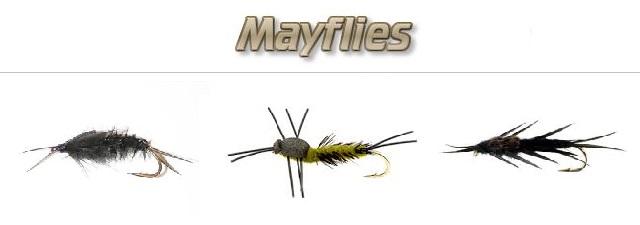
Mayflies are aquatic insects whose immature stage usually lasts one year in freshwater. The adults are short-lived, from a few minutes to a few days depending on the species and there are over 600 species in North America. The mayfly hatch happens every year over a one to three week time period. There are some very good mayfly flies on the market that are very popular for catching trout.
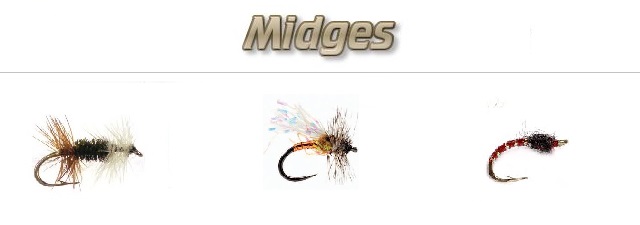
Midges are one of the hardiest aquatic insects found in any water, hatching virtually year round. They are very small, but their numbers make up for their size. Midges have a complete metamorphosis: egg, nymph, larvae and adult. They’re two-winged insects as adults, hence they’re grouped with Diptera, which means two wings. Midges are a common fly for catching trout.

Single egg patterns are one of the best ways to catch salmon and trout once these fish enter the river to make their spawning runs. There are a variety of colors on the market and they will all produce. The reason why they are so effective is that once salmon and trout enter the rivers to spawn, their primary food source is salmon eggs. Salmon & trout will set up just downstream of other spawning fish and feed aggressively on the eggs that get knocked out of the spawning beds. Anglers should make sure to have plenty of single egg flies in their tackle box because you can expect to lose quite a few of these by snagging up on the bottom and foul-hooking fish.
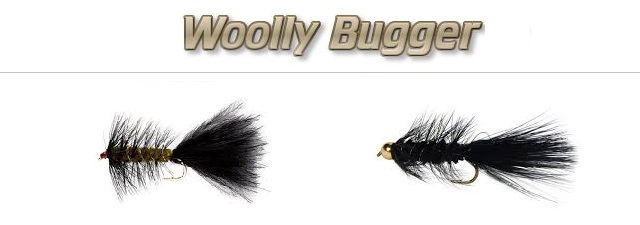
The Woolly Bugger is an artificial fly that is commonly categorized as a wet fly or streamer and it is fished under the water surface. It is popular in both freshwater and saltwater.
Visit our Woolly Bugger Section
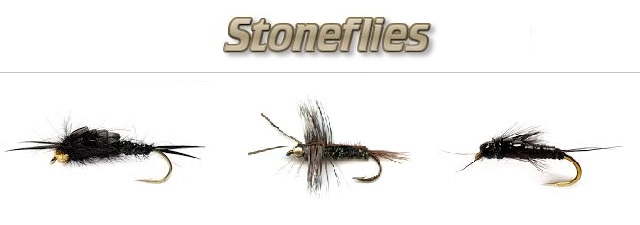
Anglers will use stoneflies as nymphs or dry flies for a variety of trout and salmon. Stoneflies are very popular among steelhead anglers.
